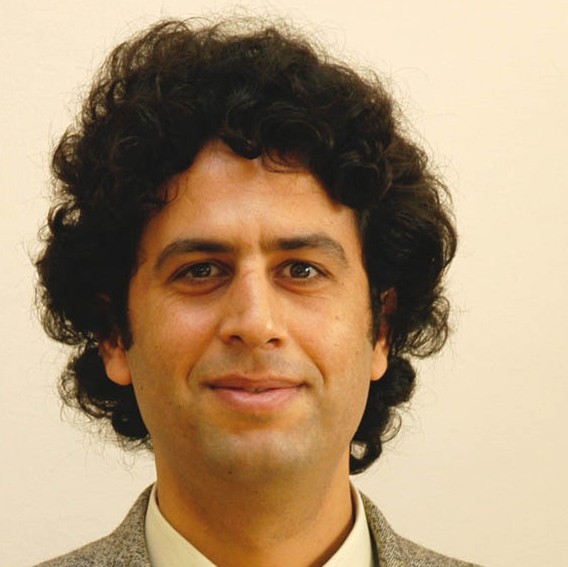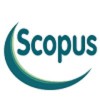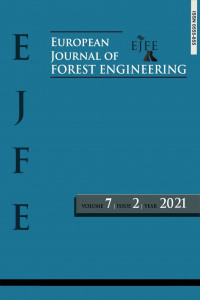Research Article
Aim & Scope
European Journal of Forest Engineering (EJFE) is a double blind peer-reviewed open access journal, which publishes high scientific level research articles and subject reviews, exclusively in English, on topics dealing with forest engineering and technologies. The aims of EJFE are to report existing practices and innovations presented by scientists and professionals in the field of forest engineering, to encourage communication between academic/research institutions and industry, and to bridge the gap between researchers and decision makers.
EJFE is an international open access journal that publishes pure and applied researches in the field of forest engineering and technologies. The journal promotes the latest scientific findings, empirical and theoretical researches on following areas;
- Forest transportation
- Wood supply chain and transportation logistics
- Forest harvesting
- Forest operations and technologies
- Forestry mechanization
- Forest road design
- Forest road construction and maintenance
- Forest road infrastructures and their assessment
- Forest utilization and planning
- Operations planning
- Small-scale forest operations
- Forest biomass harvesting, estimation, and utilization
- Harvesting non-wood forest products
- Sustainable forest management studies
- Best management practices to protect soil and water resources
- Engineering applications in watersheds
- Terramechanics in forestry
- Engineering economy, cost estimation
- Ergonomics and human factor in forestry
- Workforce education, training, and safety
- Operations Researches (OR) in forestry
- Engineering solutions for natural disasters
- Precision forestry applications
- Monitoring and assessment of forest resources
- Information Technologies (ITs) in forestry activities
- GIS and Remote Sensing applications in forestry
- Forest surveying and photogrammetry
Author Guidelines
Author Guidelines
1. General
This document presents instructions for authors who are preparing a manuscript to submit to European Journal of Forest Engineering (EJFE). Manuscripts for consideration should be submitted to the Editorial Manager via online system once you have read the author guidelines below.
Submission of a manuscript implies that the work has been submitted only to EJFE; that it has not been previously published, nor it is under consideration for publication or in press elsewhere; that its publication has been approved by all co-authors. EJFE will not be held legally responsible if authors fail to follow this condition.
1.1 Article Type
EJFE publishes scientific research articles and reviews. Both article types will not exceed 8000 words and 15 printed pages including; title page, main text, acknowledgements, tables and figures, and references. Research articles should report results of an original scientific study where conclusions are based on significant findings after thorough evaluation of the topic. Review articles should provide a critical synthesis of an important subject and develop new perspectives of broad scientific interest.
The article should be compiled in the following order: title page (including title, author’s affiliations, abstract, keywords); main text (introduction, materials and methods, results and discussion, conclusion); acknowledgements (funding and grant-awarding bodies); references; appendices (as appropriate).
1.2 Format
The article should be prepared on MS Word processor, in single line spaced using Times New Roman font on an A4 format with following margin; left 3 cm, right 2.5 cm, top and bottom 2.5 cm. All pages should be numbered consecutively.
1.3 Language
The articles are accepted in English. It is the responsibility of the author to assure that the article is written in a clear and concise language. Manuscript submitted in poor quality and insufficient English will be rejected during pre-evaluation process. If English is not your native language, you may want to have your manuscript edited by a native speaker prior to submission.
2. Title Page
2.1 Title
Title should be written using bold type and Times New Roman font size 12 with lower case letters and center aligned. The title should be concise and informative, yet the number of words in the title should be limited to those words that highlight the significant content of the article.
2.2 Author Information
Leaving one line after title, name(s) of author(s) should be written using bold type Times New Roman font size 11 with capital letters for the first letters of the words with center aligned, adding superscript numbers (i.e. 1, 2, 3) at the end of last name of each author. Corresponding author should be indicated with asterisk.
Leaving one line after name(s) of author(s), their affiliations and postal address should be written using Times New Roman font size 10 with capital letters for the first letters of the words with left alignment. The telephone number and e-mail address should be also given for corresponding author in affiliation line.
2.3 Abstract and Keywords
The Abstract should be written using Times New Roman font size 10 and justified. The Abstract of 150 to 250 words should state the objectives and results of the work described. The Abstract should not contain any undefined abbreviations or unspecified references. Leaving one line after Abstract, there should be up to six keywords with capital letters for the first letter of each keyword using Times New Roman font size 10.
3. Main Text
The main body of the text should comprise “Introduction”, “Materials and Methods”, “Results and Discussion” and “Conclusion” sections and should be prepared in single spaced throughout the article using Times New Roman font size 11 and justified. One line after each section should be left and text should be started leaving one line after section headings.
Introduction: It should contain the problem being researched, give an overview of earlier studies on the subject, and define the state of current studies. Please also state briefly and clearly the purpose of writing the article.
Materials and Methods: This section should present materials used in the study and the research procedure in detail.
Results and Discussion: The results of the study and the discussion should be grouped together, although sometimes, these sections are to be separate chapters. Results and Discussion should contain synthesis and discussion concerning previous studies on the subject. The corresponding tables and pictures should be provided in this section. However, the same data must not be displayed in two ways, e.g. graphically and in a table.
Conclusion: This section should summarize the main findings and also link to the recommendations.
Main section headings and subheadings should be written using bold type Times New Roman size 11 with capital letters for the first letter of each word in headings. The headings should be numbered consecutively (i.e. 1. Introduction, 2. Materials and Methods, 2.1 Study Area …). The sub-headings should be limited to three levels.
Scientific names in the article (such as plant and animal names) should be in italics. Internationally accepted signs and symbols should be used for units (SI units). Abbreviations should be defined at first mention and used consistently thereafter. Footnotes can be used to give additional information, which may include the citation of a reference included in the reference list.
4. Acknowledgements
Acknowledgments of people, grants, funds, etc. should be placed in a separate section at the end of the main text before the reference list. The names of funding organizations and grant-awarding bodies should be written in full.
5. Tables and Figures
All tables and figures are to be numbered using Arabic numerals and always be cited in the text in consecutive numerical order (i.e. Figure 1, Table 1 …). Tables and figures should be embedded in proper places in the text. The table and figure captions are to be written in Times New Roman font size 10. Any previously published material should be identified by giving the original source in the form of a reference at the end of the captions.
The content of the tables and figures should be in a Times New Roman font size 10. For tables and figures, the maximum width and height is 14 cm and 20 cm, respectively. Photos or pictures in the figures should have a minimum resolution of 300 dpi. The authors can use color art in tables and figures free of charge. Tables should not contain vertical lines. Figure parts are to be denoted by lowercase letters (a, b, c …). Do not include titles or captions within your figures.
6. References
The references should only include works that are cited in the article and that are published or accepted for publication. Unpublished results and information obtained through articles and personal communications are not recommended for use as the reference. Printed stage in the resources, if any, should be given a DOI number. References should be cited in the text by name and year in parentheses (Lebow, 2000a; Lebow, 2000b; Cooper and Taylor, 2005; Medvec et al., 1999).
Reference entries should be listed in alphabetical order by the last names of the first author of each work. All references cited and reference’s name of the author, journal name/book title, section title/article title, year of publication, volume number/book chapters and paging should be available. Abbreviated journal names and book titles can be used in references. URLs for the references should been provided if they are available.
Journal Article:
Asakawa, S., Yoshida, K., Yabe, K., 2004. Perceptions of urban stream corridors within the greenway system of Sapporo, Japan. Landscape and Urban Planning 68(2-3):167–182.
Heede, B.H., 1991. Response of a stream in disequilibrium to timber harvest. Environmental Management 15(2):251-255.
Book:
Haris, C.W. and Dines, N.T., 1988. Time-saver Standarts for Landscape Architecture. McGraw-Hill, Inc., New York.
Brilon, W. (Ed.), 1988. Intersections Without Traffic Signals, Proceedings of an International Workshop. Springer-Verlag, Berlin.
Book Chapter:
Fischer, G.W. and Nagin, D., 1981. Random versus coefficient quantal choice models. In: Manski, C.F., McFadden, D. (Eds.), Structural Analysis of Discrete Data with Econometric Applications, MIT Press, Cambridge, MA, pp. 273-304.
Symposium, Conference and Workshop Papers:
Dahlgren, R. A., 1988. Effects of forest harvest on stream-water quality and nitrogen cycling in the Casper creek watershed. In: Proceedings of The Conference on Coastal Watersheds: The Casper Creek Story. 6 May, Ukiah, California.
Daganzo, C., 1996. Two paradoxes of traffic flow on networks with physical queues. II SymposiumIngenieria de los Transportes, 22-24 May, Madrid, pp. 55-62.
Online Document (Web) Reference:
FAO. 2006. Rural radio transmissions and rural youth in Mali.http://www.fao.org/sd/dim_kn1/kn1_060202_en.htm (Accessed: 27 February 2006).
7. After Acceptance
Upon acceptance of your article, you will receive the proofs to check for typesetting or conversion errors and the completeness and accuracy of the text, tables and figures. At this stage, extensive changes in content (e.g. new results, corrected values, title and authorship) are not allowed. After receipt of the corrected proofs, the article in PDF format will be published online.
Ethical Principles and Publication Policy
PUBLICATION ETHICS
The following ethical duties and responsibilities are written in the light of the guide and policies made by Committee on Publication Ethics (COPE).
Ethical Responsibilities of Authors
The authors who submit their manuscripts to EJFE are expected to comply with the following ethical responsibilities:
- Author(s) must submit original studies to the journal. If they utilize or use other studies, they must make the in-text and end-text references accurately and completely.
- People who have not contributed to the study at the intellectual level should not be indicated as author.
- If the manuscripts submitted to be published are subject of conflicting interests or relations, these must be explained.
- During the review process of their manuscripts, author(s) may be asked to supply raw data. In such a case, author(s) should be ready to submit such data and information to the editorial and scientific boards.
- Author(s) should document that they have the participants' consent and the necessary permissions related with the sharing and research/analysis of the data that are used.
- Author(s) bears the responsibility to inform the editor of the journal or publisher if they happen to notice a mistake in their study which is in early release or publication process and to cooperate with the editors during the correction or withdrawal process.
- Authors cannot submit their studies to multiple journals simultaneously. Each submission can be made only after the previous one is completed. A study published in another journal cannot be submitted to EJFE. Author responsibilities given in a study (e.g.: adding an author, reordering of author names) whose review process has begun cannot be changed.
Ethical Responsibilities of Editors
General duties and responsibilities
Editors are responsible for each study published in EJFE. In this respect, the editors have the following roles and responsibilities:
- Making efforts to meet the demand for knowledge from readers and authors,
- Ensuring the continuous development of the journal,
- Managing the procedures aimed to improve the quality of the studies published in the journal,
- Supporting freedom of expression,
- Ensuring academic integrity,
- Following the procedures without making concessions on intellectual property rights and ethical standards,
- Being transparent and clear in issues that require correction or explanation.
Relationships with Readers
Editors must make decisions taking into consideration the knowledge, skills and expectations of all readers, researchers and practitioners need. They must also ensure that the published studies contribute to literature and be original. Moreover, they must take notice of the feedback received from researchers and practitioners and provide explanatory and informative feedback.
Relationships with Authors
Editors have the following duties and responsibilities in their relations with authors:
- Editors must make positive or negative decisions about the studies' importance, originality, validity, clarity in wording and suitability with the journal's aims and objectives.
- Editors must accept the studies that are within the scope of publication into pre review process unless there are serious problems with the study.
- Editors must not ignore positive suggestions made by reviewers unless there are serious problems with the study.
- New editors, unless there are serious issues, must not change the previous editor's decisions about the studies.
- "Blind Review and Review Process" must be published and editors must prevent possible diversions in the defined processes.
- Authors should be provided with explanatory and informative feedback.
Relationships with Reviewers
Editors have the following duties and responsibilities in their relations with reviewers:
Editors must
- Choose reviewers according to the subject of the study.
- Provide the information and guidance reviewers may need during the review process.
- Observe whether there are conflicting interests between reviewers and authors.
- Keep the identities of reviewers confidential in blind review.
- Encourage the reviewers to review the manuscript in an unbiased, scientific and objective tone.
- Develop practices and policies that increase the performance of reviewers.
- Take necessary steps to update the reviewer pool dynamically.
- Prevent unkind and unscientific reviews.
- Make effort to ensure the reviewer pool has a wide range.
Relationships with the Editorial Board
Editors must make sure that the members of the editorial board follow the procedures in accordance with the publication policies and guidelines, and must inform the members about the publication policies and developments. Moreover, editors must
- Ensure that the members of the editorial board review the manuscripts in an unbiased and independent manner.
- Select the new members of the editorial board from those who can contribute to the journal and are qualified enough.
- Send manuscripts for review based on the subject of expertise of the editorial board members.
- Regularly communicate with the editorial board.Arrange regular meetings with the editorial board for the development of publication policies and the journal.
Relationships with the Journal's Owner and Publisher
Editorial and Blind Review Processes
Quality Assurance
Protection of Personal Information
Encouraging Ethical Rules and Protection of Human and Animal Rights
Precautions against possible Abuse and Malpractice
Editors are supposed to take precautions against possible abuse and malpractice. They must conduct investigations meticulously and objectively in determining and evaluating complaints about such situations. They must also share the results of the investigation.
Ensuring Academic Integrity
Editors must make sure that the mistakes, inconsistencies or misdirections in studies are corrected quickly.
Protection of Intellectual Property Rights
Constructiveness and Openness to Discussion
Editors must
- Pay attention to the convincing criticism about studies published in the journal and must have a constructive attitude towards such criticism.
- Grant the right of reply to the author(s) of the criticized study.
- Not ignore or exclude the study that include negative results.
Complaints
Editors must examine the complaints from authors, reviewers or readers and respond to them in an explanatory and enlightening manner.
Political and Economic Apprehensions
Neither the owner of the journal, publisher or any other political or economical factor can influence the independent decision taking of the editors.
Conflicting Interests
Ethical Responsibilities of Reviewers
Reviewers must
- Agree to review only in their subject of expertise.
- Review in an unbiased and confidential manner.
- Inform the editor of the journal if they think that they encounter conflict of interests and decline to review the manuscript during the review process.
- Dispose the manuscripts they have reviewed in accordance with the principle of confidentiality after the review process. Reviewers can use the final versions of the manuscripts they have reviewed only after publication.
- Review the manuscript objectively and only in terms of its content and ensure that nationality, gender, religious and political beliefs, and economic apprehension do not influence the review.
- Review the manuscript in a constructive and kind tone, avoid making personal comments including hostility, slander and insult.
- Review the manuscript they have agreed to review on time and in accordance with the ethical rules stated above.
Ethical Responsibilities of Publisher
Forest Engineering and Technologies Platform, publisher of EJFE
The Editors and the Editorial Board of EJFE are conscious of the fact that they must observe the ethical responsibilities below and act accordingly:
- Editors are responsible for all the processes that the manuscripts submitted to EJFE will go through. Within this framework, ignoring the economic or political interests, the decision-makers are the editors.
- The publisher undertakes to have an independent editorial decision made.
- The publisher protects the intellectual property rights of all the articles published in EJFE and holds the responsibility to keep a record of each unpublished article.
- The publisher bears all the responsibility to take the precautions against scientific abuse, fraud and plagiarism.
Plagiarism and Unethical Behaviors
Some unethical behaviors are listed below:
- Indicating the people who do not contribute to the study as an author.
- Not indicating the people who contribute to the study as an author.
- Not indicating if the article is produced from the author”s master”s / doctoral thesis or a project.
- Making dissection, that is, publishing multiple articles from a single study.
- Not reporting conflicts of interest regarding the submitted articles.
- Deciphering the bilateral blind review process.
PUBLICATION POLICY
Open Access Policy
European Journal of Forest Engineering is an open access journal which means that all content is freely available without charge to the user or his/her institution. Users are allowed to read, download, copy, distribute, print, search, or link to the full texts of the articles in this journal without asking prior permission from the publisher or the author. This is in accordance with the DOAJ definition of open access.
Article Evaluation Period
The peer-review process is completed in two month; however, this process may be longer depending on the manuscript length and required changes.
Article Correction, Retraction and Withdrawal Policy
Price Policy
European Journal of Forest Engineering is an open access journal which means that all content is freely available without charge to the user or his/her institution. There are no article processing charges (APCs) nor article submission charges for authors. Thus, the accepted articles are published online in EJFE without any fee being charged.
Indexes
Citation Indexes
Other Indexes
Journal Boards
Editor-in-Chief


Subject Editors






Editorial Board
























Language Editor

Layout Editor



The works published in European Journal of Forest Engineering (EJFE) are licensed under a Creative Commons Attribution-NonCommercial 4.0 International License.













